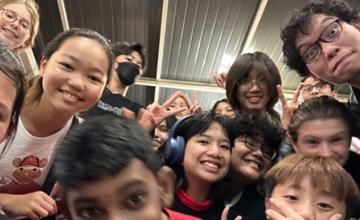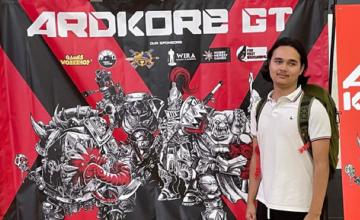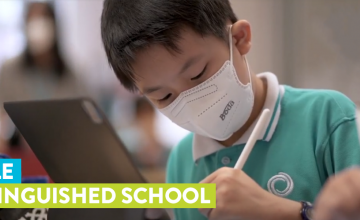3 Smart Approaches to Improving Your Child’s Critical Thinking

Jan 19, 2018
Critical thinking has become the buzzword for child development these days. Aside from being an essential skill in the 21st century, the main goal is to encourage children to stand on their own feet and become independent problem solvers. Raising your child to become natural problem solvers require a combination of skills such as the ability to collect and analyse information before arriving at a solution that fits all. There are various approaches to significantly improve your child’s critical thinking skills, but remember that learning while playing is the best way forward.
1. Maximising playtime
Imagination and creativity peak when your child is having fun. With the use of educational toys, playtime allows children to come up with solutions for many scenarios. Brain teasers, magnetic building tiles and Jenga are some of the educational toys that can strengthen their critical thinking muscle.
Take Jenga, for instance. When your child is stacking up or removing Jenga blocks, give your child the freedom to add or remove pieces to avoid the Jenga blocks from collapsing. Exploring various techniques and solutions will provide an open-ended opportunity to use their imagination and creativity to its fullest potential. For parents, resist guiding or coaching your child every step of the way. Every setback and challenge is an opportunity for your child to use their critical thinking skills.
2. Reading story books
Do you know that storytime can build up your child’s critical thinking? Storybooks have become a fundamental learning instrument for as long as we can remember. Picture storybooks, fables and pop-up books are go-to favourites in every storytelling session.
Start by introducing wordless books that encourage readers to interpret stories based on pictures alone. Before flipping to the next page, you can ask a series of questions such as ‘What is the story about?’, ‘Who are these characters?’ or ‘Why do you think this scene happened?’. When your child processes these questions, keep an open mind about their responses. Then, you can keep the discussion going by asking ‘Can you share why you think that way?’.
3. Free playing
Free playing has a different set of rules than the regular playtime. A free play session is a form of unstructured play where children experiments and explores different scenarios without any guidance. Some of the popular toys used for free play sessions are wooden blocks and Legos for construction or kitchen set and animal figurines for pretend play. A free play session typically begins with your child choosing what they would like to play.
If your child decides to spend the afternoon with a kitchen set, let them dream up a scenario such as becoming a chef in a busy restaurant or managing a school cafeteria. When free playing begins, your child will explore smaller scenarios such as cooking with pots and pans, chopping vegetables, taking orders and decorating their plate. Critical thinking happens when your child comes across situations such as finding the right utensils to slice the bread, managing different food orders, understanding cooking preparation and so forth.
1. Maximising playtime
Imagination and creativity peak when your child is having fun. With the use of educational toys, playtime allows children to come up with solutions for many scenarios. Brain teasers, magnetic building tiles and Jenga are some of the educational toys that can strengthen their critical thinking muscle.
Take Jenga, for instance. When your child is stacking up or removing Jenga blocks, give your child the freedom to add or remove pieces to avoid the Jenga blocks from collapsing. Exploring various techniques and solutions will provide an open-ended opportunity to use their imagination and creativity to its fullest potential. For parents, resist guiding or coaching your child every step of the way. Every setback and challenge is an opportunity for your child to use their critical thinking skills.
2. Reading story books
Do you know that storytime can build up your child’s critical thinking? Storybooks have become a fundamental learning instrument for as long as we can remember. Picture storybooks, fables and pop-up books are go-to favourites in every storytelling session.
Start by introducing wordless books that encourage readers to interpret stories based on pictures alone. Before flipping to the next page, you can ask a series of questions such as ‘What is the story about?’, ‘Who are these characters?’ or ‘Why do you think this scene happened?’. When your child processes these questions, keep an open mind about their responses. Then, you can keep the discussion going by asking ‘Can you share why you think that way?’.
3. Free playing
Free playing has a different set of rules than the regular playtime. A free play session is a form of unstructured play where children experiments and explores different scenarios without any guidance. Some of the popular toys used for free play sessions are wooden blocks and Legos for construction or kitchen set and animal figurines for pretend play. A free play session typically begins with your child choosing what they would like to play.
If your child decides to spend the afternoon with a kitchen set, let them dream up a scenario such as becoming a chef in a busy restaurant or managing a school cafeteria. When free playing begins, your child will explore smaller scenarios such as cooking with pots and pans, chopping vegetables, taking orders and decorating their plate. Critical thinking happens when your child comes across situations such as finding the right utensils to slice the bread, managing different food orders, understanding cooking preparation and so forth.


